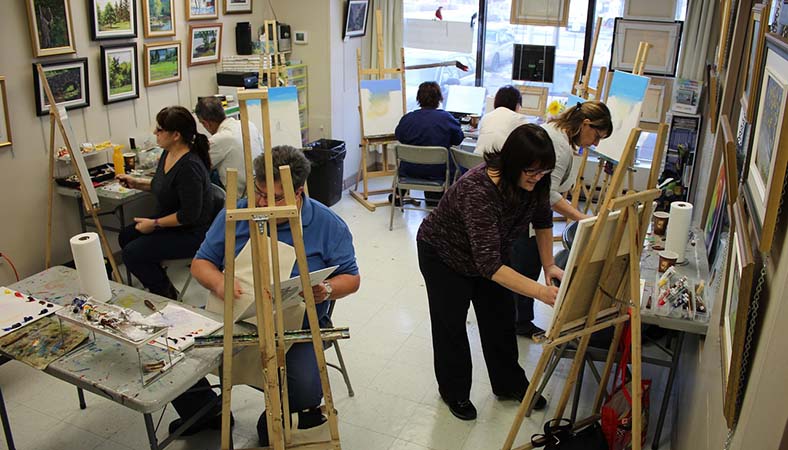Are you considering starting art therapy? If so, you may be looking for more information about the process and what to expect when working with an art therapist. Most prospective clients compare art therapy to art classes or courses they have attended in the past. But it’s important understand the difference between art therapy and art class.
Who you work with in art therapy and art classes
In an art class, you typically work with an instructor trained to teach the concepts of art and design to create a specific art piece. Their role allows them to demonstrate and critique art work based on the principles of art. In contrast, an art therapist can help you tailor art making sessions to meet your needs while guiding you along the art making process. The role of an art therapist is also one of a mental health counselor, who keeps your information confidential and helps you process your thoughts and emotions.
The art making space
In an art class, you typically work in a group setting, where art is on display for others to view while working. Supplies are generally provided as tools to create a specific product or learn about a specific material. In art therapy, you work in a dedicated, calming space, either individually with an art therapist, or in a group setting, and only share your art if you feel comfortable to do so.
Goals in art classes and art therapy
Art classes and art therapy sessions typically have very different goals; in art classes, it is typically to learn to make something specific, or apply the concepts of art and design into practice, or learn a skill. In a session with an art therapist, the goal is to focus on emotional expression, to relieve anxiety, depression, or other symptoms, or to assess a client on current level of functioning.
Product vs process
Art classes most typically concentrate on the product–the end result–of art making, whereas art therapy concentrates on the process of art making, although the final creation can be just as useful for understanding more about a client. Products are typically analyzed, judged, and critiqued against the principles of art, and the art making process looks deeper into the evolution of your art over time, as well as the expression and release of heavy thoughts and feelings in comparison to mood.
While art classes and art therapy are often compared, they are actually very different in their process and intention to help either students or clients achieve a specific goal. They can work hand in hand for any creative, but the results, expectations, and outcomes are significantly different–so embrace both.
Author Sam Nolan is a Licensed Professional Counselor and Provisionally Licensed Art Therapist. Learn more about Sam here.
Image by renemilone from Pixabay
